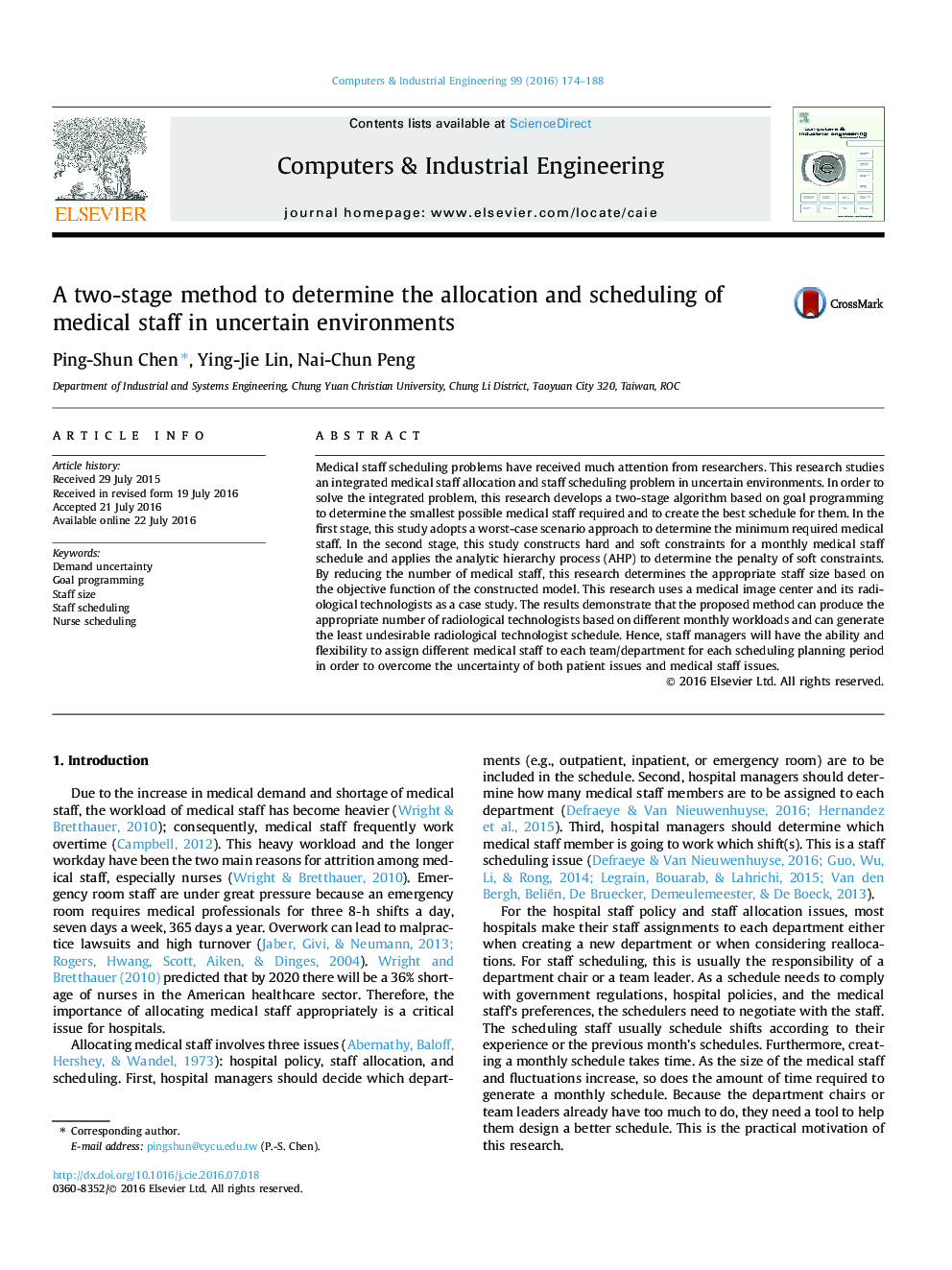| Article ID | Journal | Published Year | Pages | File Type |
|---|---|---|---|---|
| 1133248 | Computers & Industrial Engineering | 2016 | 15 Pages |
•We solved the medical staff allocation problem in an uncertain environment.•Based on the minimum number of staff, we determined an optimal schedule.•A two-stage method was developed to solve the proposed ISASP.•We helped hospital managers determine the appropriate staff and their schedules.
Medical staff scheduling problems have received much attention from researchers. This research studies an integrated medical staff allocation and staff scheduling problem in uncertain environments. In order to solve the integrated problem, this research develops a two-stage algorithm based on goal programming to determine the smallest possible medical staff required and to create the best schedule for them. In the first stage, this study adopts a worst-case scenario approach to determine the minimum required medical staff. In the second stage, this study constructs hard and soft constraints for a monthly medical staff schedule and applies the analytic hierarchy process (AHP) to determine the penalty of soft constraints. By reducing the number of medical staff, this research determines the appropriate staff size based on the objective function of the constructed model. This research uses a medical image center and its radiological technologists as a case study. The results demonstrate that the proposed method can produce the appropriate number of radiological technologists based on different monthly workloads and can generate the least undesirable radiological technologist schedule. Hence, staff managers will have the ability and flexibility to assign different medical staff to each team/department for each scheduling planning period in order to overcome the uncertainty of both patient issues and medical staff issues.
